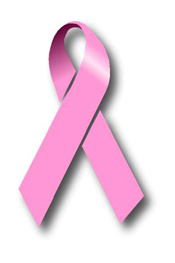Lady Noles
Volley For The Cure
Lady Noles
Volley For The Cure
Facts and Information
Facts and Information
Breast cancer is the second most common cancer in U.S. women. It is estimated that each year about 210,000 women are diagnosed with breast cancer and around 40,000 die from the disease.
To learn more about breast cancer, visit the National Cancer Institute at www.cancer.gov/cancertopics/types/breast
Common myths about breast cancer
You cannot get breast cancer by bumping, bruising, pinching, or touching the breast. You also cannot catch breast cancer from another person.
Staying healthy and preventing cancer
There are things you can do to help lower your risk of breast cancer. Staying healthy may help. To protect your overall health and to prevent many kinds of cancer:
- Make healthy choices in the foods you eat. Eat five or more servings of fruits and vegetables every day.
- Get 4 or more hours of regular physical activity each week.
- Aim for a healthy weight.
- Do not have more than one alcoholic drink a day.
- Do not smoke; if you do smoke, quit
- Get screened for breast cancer regularly.
- Know your family history of breast cancer.
- Find out the risks and benefits of hormone replacement therapy to treat the symptoms of menopause.
For information on breast cancer prevention, visit the National Cancer Institute at: www.cancer.gov/cancertopics/pdq/prevention/breast/Patient/page3
Did You Know?
- White women are more likely to develop breast cancer than are African-American women, although African-American women are more likely to die of the disease.
- Men can develop breast cancer, but this disease is about 100 times more common among women than men.
- Regular screening mammograms are covered by Medicare and Medicaid programs and other private health insurance plans. Check your own insurance plans to see if you are covered.
- When breast cancer is found early, you have more treatment choices and a better chance of recovery.
- More than 9 out of 10 women whose breast cancer is found early will be cured.
Focus On: Early Detection
See your health care provider about a breast change when you have:
- A lump in or near your breast or under your arm.
- Thick or firm tissue in or near your breast or under your arm.
- Itching or skin changes such as redness, scales, dimples, or puckers.
- A change in breast size or shape.
- Nipple discharge or tenderness.
- A nipple pulled back (inverted) into the breast.
Some people do not have any signs or symptoms of breast cancer at all. That is why screening is so important. The following three recommendations can help you find and treat breast cancer early:
- Check your breasts yourself every month.
- Have your doctor check your breasts.
- Consult with your doctor as to whether a mammogram is recommended for you

